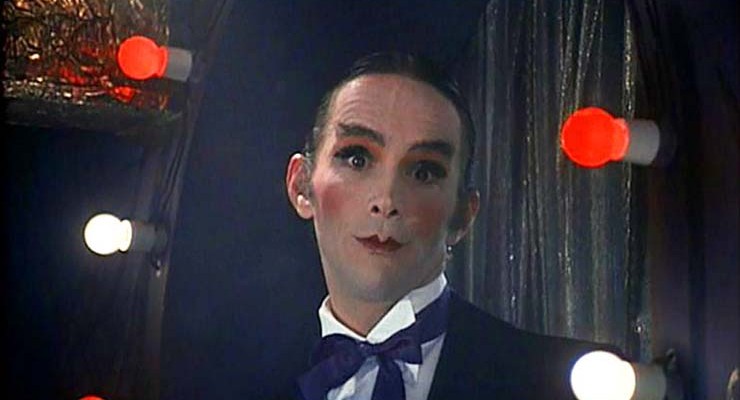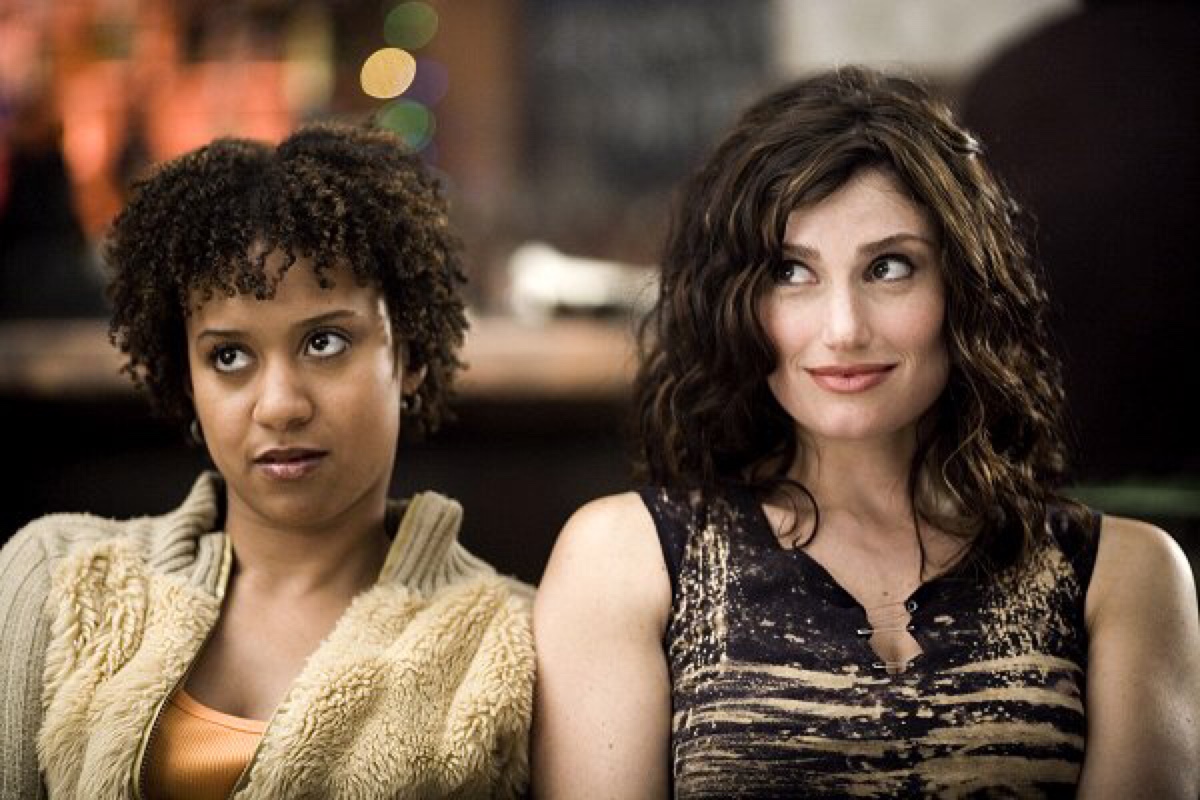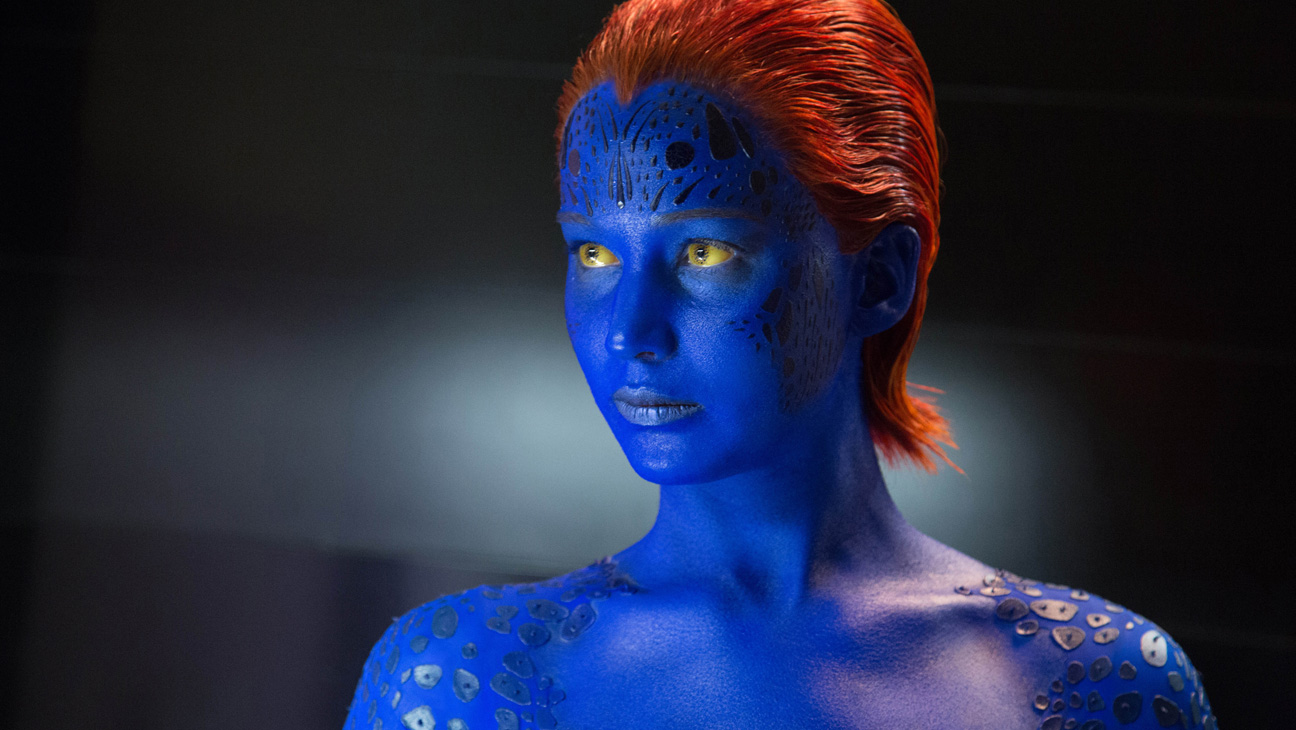This guest post written by Emily Crose appears as part of our theme week on Bisexual Representation.
I first sat down to watch the movie Cabaret when I was 17 years old. It was possibly a strange choice of movie for a supposedly straight 17-year-old boy to decide to pick up and watch one day in October, but for me it was perfectly in line with the types of movies I have always loved. Based on a Broadway musical? Check. Involves history? Check. Esoteric subject matter?… Yeah, I’d say so. With Liza Minelli playing the female lead and Bob Fosse’s direction and choreography, you’d be hard pressed to find a film more iconic and representative of the LGBTQ community, especially during the 1970s.
Adapted from the 1966 musical written by Joe Masteroff, which was based on Christopher Isherwood’s 1939 novel, Goodbye to Berlin, as well as John Van Druten’s play, I Am a Camera (1951), Cabaret tells the story of a cabaret-show style play house in the Wiemar Republic set in 1931 called the “Kit Kat Club” (no affiliation to the popular candy). It takes place in a time in Germany just before the reign of the Third Reich where sexual freedom wasn’t exactly celebrated per se, but it was tolerated.
The movie opens to a song by one of the primary characters named “Master of Ceremonies” (Joel Grey) or “Emcee” who hosts the show every night. He sings a song titled “Willkommen” as the various members of the show dance around him, the piano and wind band playing raucously nearby. Emcee says to the crowd, “Leave your troubles outside! So life is disappointing? Forget it! In here, life is beautiful, the girls are beautiful, even the orchestra is beautiful!” Indeed, inside the cabaret, everyone is beautiful.
As soon as the opening credits are through, one of the first characters we see on-screen is someone with a non-binary gender presentation. This character, who we never see again in the film, is perfect foreshadowing for the journey that the audience will take as we make our way through the plot. Not 5 minutes into the movie, we get a hint of the sexual tension that is about to unfold as Emcee explains to his audience that every girl in his cabaret is a virgin (And if you don’t believe him, you can “ask [them]!”).
Despite the director’s attention paid to Emcee at the beginning of the movie, the body of the plot revolves around an American living in Germany who works at the cabaret — Sally Bowles (Liza Minelli) as she manages a romantic triangle opposite Brian Roberts (Michael York) and Maximilian von Heune (Helmut Griem).
In one scene, Sally puts on a record and throws herself onto the bed with Brian, asking him if her body “drives [him] wild with desire.” His tepid response leads her to ask him if he even sleeps with girls. Brian recounts his “disastrous” sex life with women claiming ambiguously that his success (or lack thereof) with women has led to his apparent celibacy. The scene ends with Sally and Brian agreeing to be friends, but an odd sexual tension remains.
As the film goes on, the relationship between Sally and Brian continues at a distance until Sally gets a rejection telegram wherein she questions her value. It is there, sobbing and at her lowest point that we’ve seen her so far in the movie, that Brian and Sally finally have sex.
There’s something hanging over the plot though. Sally’s promiscuity hasn’t conspicuously ended Brian’s self-imposed sexual “dry-spell.” There’s much more to the nature of their relationship together and to their sexual peers both male and female, but the full details of both of their sexual preferences is still ambiguous to us.
Enter Maximilian.
The first scene we see with Brian and Maximilian overflows with jealousy as Max boasts about his status as a Baron. It’s clear that Brian does not want Sally involved with Max, but in the very next scene when Max walks into the bedroom where Sally and Brian are sleeping holding three champagne glasses (after what looks like an absolutely exhausting night) we see the first hint of what just might become a polyamorous situation between the three of them.
Max, who clearly has money, continues to flaunt his wealth. He buys fancy presents for both Sally and Brian and takes both of them to expensive dinners. We as an audience are left wondering if Max is exercising some form of dominance over Brian by making him some sort of cuckolded third wheel, or if maybe Max’s intention isn’t to humiliate Brian, but to date both of them instead. It is amidst these questions that the film jumps into my favorite song from the show, “Two Ladies.”
“Two Ladies” is sung by Emcee, who explains how his polyamorous relationship with his two women works. As the song goes, there are two ladies, but Emcee is “the only man (ja!)” The song in the film touches on the nature of what we can easily assume is a bisexual relationship between both women as they all sleep together. There’s even a lyric about them switching partners “daily, to play as [we] please.”
Now at this point in the review, I have to point out an important distinction between the film version of Cabaret and some stage performances of the show.
Throughout the 1972 film version, the gender variant characters were dealt with in the same way that trans people have been for decades — as the butt of cheap jokes. The one named trans woman, “Elka” was used as the target of comic relief in the two scenes that she appears in. In one scene, Brian uses a men’s room urinal at the Kit Kat Club when Elka walks in and stands next to him to his great surprise, and I assume to the amusement of the audience. In a second scene, she acts as a stand-in for Sally as Sally tells an unwanted suitor that she “has the tiniest touch of syphilis.” Then when talking to Brian later adds, “…but wait ‘till he gets a load of what ole’ Elky’s got!” These elements don’t well respect the identities of the characters they are meant to represent, and ultimately stand as the one major criticism I have of the film overall.
While this bit of tired comic relief hasn’t aged well at all, the on-stage versions of Cabaret go a step further in dealing with trans identities. In some versions of the show, one of the aforementioned “two ladies” is through visual and auditory implication, a transgender woman.
In one revival showing in 1994 starring Alan Cumming as Emcee, one of the women adopts a deeper voice implying her background as a trans woman, while another performance starring Michael C. Hall as Emcee shows a man in drag as one of the two ladies. While it’s not a flattering representation of trans women, (read: flat-out awful) it does add an additional level of identity complexity to the relationship of Emcee and his ladies, even if the application of that concept is transphobic under scrutiny. But I digress… back to the film review.
As the film continues, we can see that Brian, Max, and Sally are the poster children for the Bohemian lifestyle. They drink, they smoke, they attend the cabaret, and the more we see Max and Brian together, the more we wonder what’s happening between the two of them. In the beginning, Brian is portrayed as a naive wallflower whose only interaction to the outrageous life in the cabaret is through Sally. Later on though, Sally and Max play the role of ‘the corrupters’ who expose Brian to their concept of free love and excitement. However, it’s not until a party at Max’s estate that we start to get much more direct information to help us understand what Max has in mind for Sally and Brian.
As the Nazis begin to be more visible in the movie, the tension between the three main characters starts to rise with them. Brian’s irritation with Sally’s free-spirited lifestyle piques when she proclaims, “You can’t stand Maximillian because he’s everything that you’re not! He’s rich, and he knows about life!”
“Oh, screw Maximillian!” Brian says angrily, to which Sally responds curtly, “I do.” In a moment of pure bisexual ecstasy Brian glibly retorts, “So do I.” Boom. The mystery is solved. The bisexual love triangle is finally complete, but alas, the revelation of this important detail is short lived. Max leaves Sally and Brian both. He leaves them with 300 Deutsche Marks, a pregnant Sally, and the broken remnants of the love they each had for each other for Brian and Sally to begin to rebuild. We wonder how Brian and Sally will fare with the burgeoning Third Reich approaching, but we can safely assume that the answer to that question is that they probably won’t do great.
So were bisexual people portrayed positively? Maybe.
What we have to consider in the judgment of this question is the context of both the representation of bisexuality in the script, and the way bisexuality was treated at the time the script was adapted to the screen.
Sure, the scene where Brian declares that he is also having sex with Max was handled with a certain amount of requisite gravitas; in retrospect, probably a bit too much gravitas. The face of stunned Sally Bowles after she hears him speak the words works as a gimmick; a cheapened shock value to the audience for dramatic effect that works in the same way that Elka and Brian’s bathroom scene was meant to evoke laughter. It was meant to give the movie an edge. On one hand, Brian’s official coming out to the audience can be construed as a moment without much depth. On the other hand, that edge that his coming out has still exists even in modern screenings of the movie.
We know Brian’s heterosexuality is in question, and we know through early dialogue that Brian is possibly (probably) attracted to men in some way, but the fact that he loved Max in the same way Sally did is a plot twist that would likely be surprising regardless of the gender of Brian’s character.
After it’s all said and done, Cabaret has aged fairly well in terms of the portrayal of its LGBTQ characters. The way the script handles bi/homo/hetero sexuality is respectful, especially for a movie where the concept is so central. Despite my concerns about the script’s treatment of trans identities, I do like Cabaret. I liked it the first time I saw it, and that attraction to the play and movie persists with me today. There’s a good reason why people love Cabaret, but for the faults we see with our modern eyes, an updated version of Cabaret is in order be it on-screen or on-stage.
Emily Crose is a 30-year-old trans woman with a wife and two kids. Her favorite movie is and always will be Ghostbusters (1984). By day she is a Baroness of binary black magic, by night a voracious writer of her own self-important opinions. She loves movies, musicals, baking, and mint tea.















